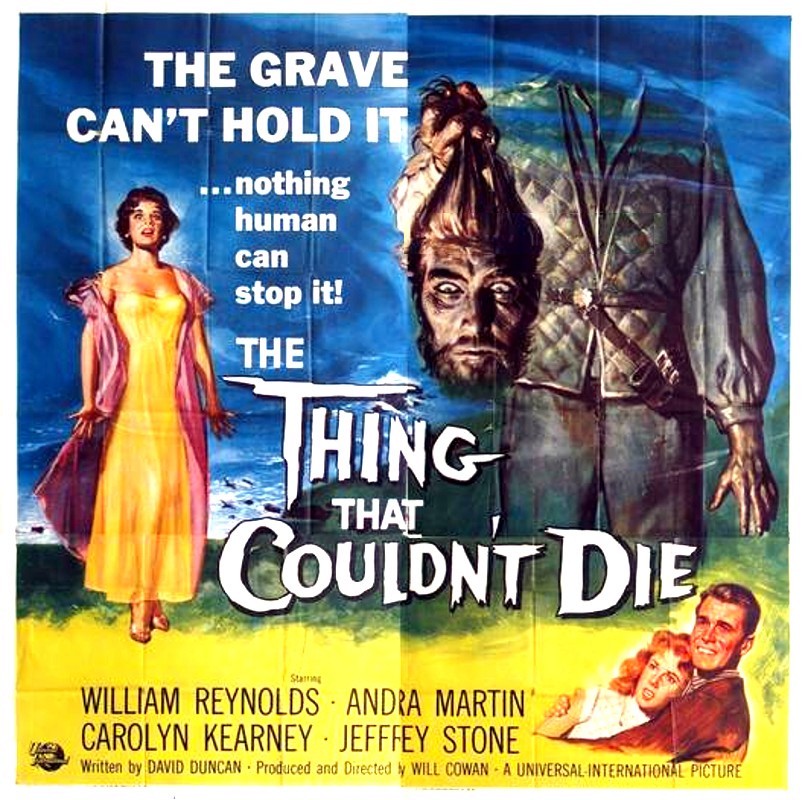
The DOL Fiduciary Rule — The Thing That Couldn’t Die?
 Released in 1958 as part of the Universal Horror Film Series, The Thing That Couldn’t Die has this compelling plot summary:
Released in 1958 as part of the Universal Horror Film Series, The Thing That Couldn’t Die has this compelling plot summary:
“A 400-year-old disembodied head hypnotizes a female psychic, who recovered it using a dowsing rod, to search for the rest of its body.”
While we can offer neither a disembodied head nor a female psychic, the tortured history of the Department of Labor’s re-definition of “fiduciary” feels like it could be a sequel to The Thing That Couldn’t Die.
For those of you who may have someone missed the earlier installments of this saga, the Department of Labor (or the “DOL”) proposed a change in an over-30-year-old definition of “fiduciary” in the context of providing non-discretionary investment advice. The rule was initially proposed, then retracted, and then re-proposed before ultimately becoming final and going into effect in June 2017. The overall impact of the rule was to cause more parties to be ERISA fiduciaries than under the old definition. Fiduciary status is important because it affects the types of compensation that the advice provider can receive.
Along with the fiduciary rule, the DOL also issued two prohibited transaction exemptions. If the conditions of those exemptions were met, then advisers may be able to continue to receive certain types of compensation—such as commissions—that fiduciaries generally are not permitted to receive. Implementation of the two exemptions had been delayed until July 2019 and the DOL granted a transitional, non-enforcement policy under which it would not take enforcement action against parties seeking in good faith to comply.
On March 15, 2018, however, the United States Circuit Court for the Fifth Circuit struck down the fiduciary rule, deciding in favor of a number of leading financial services industry trade associations. In reaching its opinion, the Court found that the DOL exceeded its statutory authority in crafting a rule that was overly broad and inconsistent ERISA’s statutory text. Also of concern, the rule issued exemptions as a means of imposing expansive duties on service providers to individual retirement accounts (IRAs) and other non-ERISA plans that Congress did not contemplate. This opinion nullifies the rule for everyone nationwide, not just the parties who challenged it in the litigation.
So certainly the rule is dead now, right? Well, not quite. The DOL declined to appeal the decision (perhaps not surprising since it is safe to assume that the current administration may not share the prior administration’s enthusiasm for this rule). The deadline to appeal came and went on April 30 and, according to the procedural rules in the 5th Circuit, an order would typically be effective seven days after the expiration of the appear period—which would have been May 7. But nothing happened on May 7.
In the meantime, AARP and a number of state attorneys general filed motions to intervene in the case. Those motions were denied, but there has still been no final order. The latest news is that state attorneys general of New York, California and Oregon have moved for a re-hearing of the case en banc (meaning the entire Court of Appeals for the Fifth Circuit, not the customary three-judge panel). As of the time we went to press with this newsletter, that motion is still pending.
Also in the meantime, the DOL issued brief guidance on May 7 to extend the transitional non-enforcement period for those complying in good faith with the exemptions until the DOL takes further action with respect to these matters. Many financial services providers made significant changes to their structure, procedure and compensation in reliance on these exemptions.
So stayed tuned for the next installment. While we cannot promise anything as enticing as The Thing that Couldn’t Die, it is safe to say that this plot is not yet over, particular as the SEC, along with state regulators, appear poised to pick up where the DOL left off.





